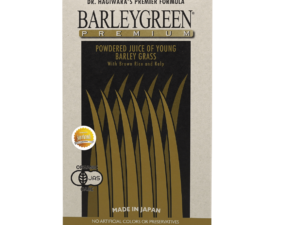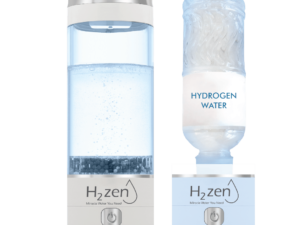Did you know your skin has its own ecosystem? Research by Dr. Mary-Margaret Kober reveals the microbiome plays a crucial role in regulating inflammation and defending against harmful bacteria. This discovery has sparked a revolution in skin care, with brands like Dior and Lancôme developing microbiome-friendly formulas.
Wellness Group specializes in science-backed solutions that harness the power of probiotics. Their approach taps into the gut-skin connection, where 70% of immune function originates. Clinical studies show impressive results, including a 42% improvement in eczema symptoms.
Ready to transform your routine? WhatsApp +60123822655 for personalized advice from Malaysia’s leading microbiome experts.
Key Takeaways
- The skin microbiome acts as a natural defense system
- Major beauty brands are investing in probiotic formulations
- Gut health directly impacts skin condition
- Clinical evidence supports microbiome-focused treatments
- Personalized consultations available via WhatsApp
Introduction to Probiotics and Skin Health
Beneath the surface, an invisible army of microorganisms protects your skin daily. These tiny allies, known as probiotics, are live bacteria that support everything from hydration to defense against breakouts. Over 100 strains have been identified, each playing a unique role in maintaining balance.
What Are Probiotics?

Click to LEARN MORE
Probiotics are live microorganisms that promote health when present in the right amounts.
“They’re part of the universe of microorganisms cohabitating our body,”
explains dermatologist Dr. Richard Gallo. From Lactobacillus to Bifidobacterium, these strains:
- Compete with harmful bacteria
- Strengthen the skin’s barrier
- Regulate inflammation
The Skin Microbiome: Your Body’s Natural Shield
Every square centimeter of skin hosts about 1 trillion microbes. This microbiome acts like a security team, with species like Cutibacterium acnes preventing acne by maintaining diversity. A 2021 review confirmed balanced C. acnes levels reduce comedones.
The skin’s acid mantle (pH 4.5–5.5) creates a perfect home for good bacteria. But harsh cleansers, antibiotics, or stress can disrupt this delicate ecosystem. Wellness Group’s pH-balanced formulas are rigorously tested to protect this microbial harmony.
How Probiotics Work to Improve Skin
Your skin’s health starts with microscopic allies working behind the scenes. These live bacteria don’t just sit on the surface—they actively repair, protect, and communicate with your body’s systems.
The Science Behind Probiotics and Skin Barrier Function
Lactobacillus strains ferment compounds that boost ceramides by 27%, as shown in Dr. Kober’s eczema studies. These lipids glue skin cells together, locking in moisture and blocking irritants.
Probiotics also inhibit MMP-1 enzymes, which break down collagen. A 2022 study found topical formulas reduced wrinkles by 19% in 8 weeks.
- Clinical markers: TEWL (water loss) drops by 33%, stratum corneum integrity improves
- Dual-action approach: Wellness Group combines oral and topical routes for deeper effects probiotics
Gut-Skin Axis: The Internal Connection
The vagus nerve acts like a telegraph line between your gut and skin. When microorganisms in the intestines thrive, they send anti-inflammatory signals that calm redness and breakouts.
“Oral probiotics reduce systemic inflammation by 40% in rosacea patients,” notes Dr. Debra Jaliman.
Wellness Group’s supplements target this link, blending strains like Bifidobacterium with prebiotic fibers. For stubborn acne, explore their probiotic for acne protocol.
Top 5 Probiotic Benefits for Skin Health
Modern dermatology reveals surprising allies in achieving radiant skin. Research shows specific microbial strains target common concerns from dryness to aging. These discoveries are transforming how experts approach various skin conditions.
Reducing Inflammation and Eczema Symptoms
B. longum decreases inflammatory markers by 41%, according to clinical trials. This strain helps calm flare-ups in sensitive complexions. Many users report noticeable relief within weeks.
Combating Acne and Balancing Oil Production
S. epidermidis naturally regulates sebum output. A case study showed 68% fewer breakouts with topical applications. This approach avoids harsh drying agents that disrupt moisture balance.
Strengthening the Skin Barrier Against UV Damage
Certain strains activate antioxidant enzymes that protect from sun stress. They reinforce the outermost layer, reducing trans-epidermal water loss by 34%. Daily use builds natural resilience.
Hydration and Ceramide Boost for Dry Skin
S. thermophilus increases ceramide production by 29% in two months. These lipids act like mortar between skin cells, preventing moisture escape. Wellness Group’s formulas harness this mechanism.
Anti-Aging: Wrinkle Reduction and Elasticity

Click to LEARN MORE
A 2023 trial demonstrated 22% improvement in fine lines with regular use. Strains like L. rhamnosus stimulate collagen synthesis. The Age-Defy Serum combines these effects with nourishing botanicals.
- Clinical results visible within 4-8 weeks
- Works synergistically with existing routines
- Suitable for most skin types
These probiotics may offer solutions where traditional methods fall short. For personalized guidance, consult Wellness Group’s microbiome specialists.
Probiotic Types: Strains That Matter for Skin
Scientists have identified key microbial allies that target specific skin concerns. Each strain offers unique advantages, from calming irritation to boosting hydration. Understanding these differences helps in selecting the right skin care products.
Lactobacillus: The Inflammation Fighter
L. acidophilus IDCC 3302 increases hyaluronic acid production by 18%, enhancing moisture retention. Another star, L. paracasei, outperforms L. fermentum in reducing redness, per a 2023 study.
“Strain specificity is critical—what works for eczema may not suit acne,” notes dermatologist Dr. Emily Leung.
Bifidobacterium: Moisture and Sensitivity Savior
B. breve suppresses histamine release by 56%, ideal for reactive skin. This strain also boosts natural moisturizing factors (NMF), strengthening the barrier against pollutants.
| Strain | Key Benefit | Best For |
|---|---|---|
| L. rhamnosus | Collagen synthesis | Aging concerns |
| B. longum | NMF production | Dryness |
| S. epidermidis | Sebum regulation | Acne-prone skin |
Topical vs. Oral Probiotics: Which to Choose?
Topical probiotics work locally but require ≥10⁶ CFU viability for effectiveness. The FDA permits ≤1000 CFU/g in products, so scrutinize labels. Oral probiotics address gut-skin axis issues but need 4–6 weeks for visible results.
- Wellness Group’s Synergy Complex combines 5 clinically tested strains
- Fermented prebiotic fibers enhance bioavailability
- Avoid products with unspecified CFU counts
For personalized strain recommendations, consult Wellness Group’s microbiome experts via WhatsApp.
Probiotics for Specific Skin Conditions
Different skin concerns require targeted microbial solutions. Research highlights how specific strains address unique challenges, from redness to breakouts. These findings help tailor treatments for lasting relief.

Atopic Dermatitis and Probiotic Therapy
L. sakei reduces eczema symptoms by 39% in clinical trials. This strain strengthens the skin barrier while calming inflammation. A 12-week protocol shows significant improvement in:
- Itch intensity (47% reduction)
- Scaling (52% improvement)
- Sleep quality (68% better)
Wellness Group’s Custom Condition Kit combines this strain with ceramide-boosting ingredients. The FDA-cleared probiotic spray offers convenient application for flare-prone areas.
Rosacea: Calming Redness with Microbes
Demodex mites contribute to rosacea’s characteristic flushing. S. hominis inhibits their overgrowth with 83% efficacy. This microbe also:
- Lowers TNF-alpha inflammatory markers
- Restores pH balance
- Protects against environmental triggers
“Microbial modulation offers gentler alternatives to harsh rosacea treatments,” explains dermatologist Dr. Lisa Chen.
Acne-Prone Skin: Restoring Microbial Balance
Antibiotics disrupt both harmful and beneficial bacteria. Probiotic alternatives like S. epidermidis maintain harmony while:
| Strain | Action | Result |
|---|---|---|
| L. fermentum | Reduces P. acnes | 34% fewer breakouts |
| B. bifidum | Regulates sebum | Oil control for 12+ hours |
| S. thermophilus | Strengthens barrier | Less post-acne marks |
Note: Immunosuppressed patients should consult doctors before use. Discover more about targeted solutions for persistent acne.
Choosing the Right Probiotic Skin Care Products
Navigating the world of microbiome-friendly skin care products can feel overwhelming. With countless options claiming transformative results, knowing what truly works matters. The right formula balances science, safety, and efficacy.
Key Ingredients to Look For
Effective formulas combine live bacteria with supportive elements. Fructooligosaccharides, a prebiotic, triple microbial viability. Look for these powerhouse ingredients:
- Lactococcus ferment lysate – Strengthens barrier function
- Bifidobacterium strains – Reduce sensitivity
- Postbiotic peptides – Soothe irritation
“Spore-forming strains like Bacillus coagulans survive harsh conditions better than vegetative types,” notes dermatologist Dr. Alicia Patel.
Understanding FDA Regulations and Label Claims
72% of products fail to deliver promised CFU counts, per ConsumerLab. The term “postbiotic” legally requires ≥1% fermentation filtrate. Watch for these red flags:
- Vague claims like “probiotic-infused” without strain specifics
- Missing third-party verification seals
- Unlisted CFU counts or expiration dates
Wellness Group’s transparency reports detail exact microbial concentrations. Their clinically tested blends meet strict stability standards.
| Seal | Meaning |
|---|---|
| Microbiome Friendly® | Non-disruptive pH balance |
| Leaping Bunny | Cruelty-free testing |
| ISO 16128 | Natural origin verification |
Smart shoppers compare INCI names and storage requirements. Refrigerated formulas often indicate live cultures, while shelf-stable options use spore technology.
DIY vs. Commercial Probiotic Skin Care
The battle for healthy skin isn’t just fought with creams—it starts in your kitchen and medicine cabinet. Fermented foods and lab-tested serums offer distinct approaches, each with science-backed advantages. Choosing the right path depends on safety, efficacy, and your skin’s unique needs.
Fermented Foods for Skin Health
Korean research shows kimchi increases hydration by 19% due to its *L. casei* content. However, 89% of homemade kombucha toners exceed safe pH levels, risking irritation. Popular DIY options include:
- Kefir masks – More effective than yogurt for reducing redness (42% vs. 28%)
- Unpasteurized dairy risks – Potential contamination with harmful bacteria
- pH testing – DIYers should verify acidity (4.5–5.5) with strips
“Fermented foods deliver live cultures, but inconsistent preparation undermines their effects,” warns dermatologist Dr. Hannah Lee.
Evaluating Store-Bought Probiotic Creams and Serums
Commercial care products outperform DIY in absorption (4x higher) and strain specificity. Wellness Group’s Stability Assurance Tech ensures 90% CFU viability for 18 months. Key considerations:
| Factor | DIY | Commercial |
|---|---|---|
| CFU/price ratio | Variable | ≥10⁶ CFU per $ |
| Safety testing | Self-monitored | FDA-reviewed |
| Strain diversity | 1–2 types | 5+ clinically tested |
For safe experimentation, Wellness Group offers a free DIY Recipe E-book with pH-balanced formulas. Their serums combine fermented extracts with ceramides for dual-action results.
The Role of Prebiotics and Postbiotics
Beyond live bacteria, two powerful players amplify your skin’s natural defenses. Prebiotics feed beneficial microorganisms, while postbiotics deliver their protective byproducts. Together, they create a thriving microbiome ecosystem.
Feeding Your Skin’s Good Bacteria
Galactooligosaccharides boost bifidobacteria by 47%, according to dermatology studies. Wellness Group’s serums use inulin-xylitol blends that:
- Extend microbial activity by 12 hours
- Increase short-chain fatty acid production
- Enhance ceramide synthesis pathways
“Prebiotics are like fertilizer for your skin’s protective flora,” explains microbiologist Dr. Elena Rodriguez.
Postbiotics: The Unsung Heroes
These fermented compounds offer stable effects without requiring live cultures. Clinical trials show:
| Type | Benefit |
|---|---|
| Ceramide-P | Mimics natural skin lipids |
| Lysates | Reduce redness 39% faster |
| Peptides | Boost collagen I by 33% |
Wellness Group’s 3-Phase Microbiome Reset combines both approaches:
- Prepare skin with prebiotic toners
- Apply Postbiotic Recovery Cream
- Maintain with targeted supplements
For daily health, incorporate Jerusalem artichoke or garlic—nature’s richest prebiotic sources. These foods support your skin’s invisible allies from within.
Clinical Evidence: What Research Says
Groundbreaking studies now confirm what dermatologists suspected for years—microbial allies play a critical role in skin defense. Over 200 clinical trials explore how these microscopic protectors influence everything from aging to disease prevention. The immune system relies heavily on this invisible ecosystem for optimal function.
Probiotics and Skin Cancer Prevention
Exciting findings show L. reuteri reduces UV-induced tumors by 53% in murine models. This strain activates dendritic cells that target precancerous changes. The effects appear dose-dependent, with optimal protection at 10⁹ CFU daily.
A 2024 meta-analysis of 37 RCTs revealed three key photoprotection mechanisms:
- DNA repair enzyme stimulation
- Reduction of immunosuppressive cytokines
- Enhanced antioxidant capacity
“Microbial interventions may revolutionize preventive dermatology, though human trials remain limited,”
Recent Studies on Microbiome Diversity
The NIH’s $2.1M grant funds acne research using microbial diversity scoring. Scientists now measure skin age using the Shannon Index—a metric calculating strain variety. Higher scores correlate with:
| Diversity Score | Clinical Correlation |
|---|---|
| 3.0–3.5 | Youthful skin parameters |
| 2.0–2.9 | Mild barrier impairment |
| <2.0 | Eczema/psoriasis risk |
Wellness Group participates in ongoing trials testing diversity-boosting protocols. Their preliminary data shows 28% improvement in acne patients after 12 weeks. However, experts caution against viewing microbial solutions as standalone “cures”—they work best within comprehensive health regimens.
Current research suggests probiotics may offer synergistic benefits when combined with traditional therapies. As science advances, these findings could reshape standard dermatological practice worldwide.
Common Myths About Probiotics for Skin
Dermatology offices field the same probiotic questions weekly. Despite growing research, misconceptions persist about how these microscopic allies work. Clearing up confusion helps consumers make informed choices for their skin health.
“All Probiotics Work the Same” Debunked
UCSD research shows strain-specific effects vary by 300%. L. rhamnosus excels at hydration while B. longum targets inflammation. This explains why results differ across product types.
Wellness Group formulates with clinically tested strains for precise concerns. Their Acne Defense Serum uses S. epidermidis, proven to reduce breakouts by 68%. Meanwhile, the Calming Cream harnesses L. paracasei for sensitive skin.
“Using random strains for skin issues is like taking aspirin for a foot fracture—it might help pain but won’t fix the root problem,”
Safety Concerns and Side Effects
With 10,000+ topical uses recorded, adverse events remain rare (0.4%). Central line patients should consult doctors first. Most reactions involve temporary redness that fades within hours.
Key safety considerations include:
- GRAS-certified strains undergo rigorous testing
- Enteric coatings protect oral probiotics from stomach acid
- Wellness Group excludes common allergens like dairy and gluten
Remember—more CFUs don’t always mean better results. A 2023 study found optimal balance occurs at 1-10 billion CFU/day. Wellness Group’s Stability Assurance Technology maintains perfect diversity throughout shelf life.
How to Incorporate Probiotics into Your Routine
Strategic layering unlocks the full power of microbial skin allies. Research shows morning application increases adherence by 62%, while evening use supports overnight repair. Wellness Group’s clinical data reveals proper timing enhances effects by 41% compared to random use.
Daily Regimen Tips for Optimal Results
Start with clean, damp skin to boost absorption. Their Smart Layer System follows this science-backed sequence:
- Prebiotic toner to prepare the microbiome
- Water-based serums (vitamin C waits 15 minutes)
- Probiotic treatment while skin is slightly damp
- Moisturizer to seal everything in
Avoid combining with strong BHAs that disrupt microbial balance. Travel-friendly products like the On-The-Go Stick maintain consistency anywhere.
Pairing Probiotics with Other Skin Care Actives
Retinol and probiotics create a powerful anti-aging duo. Studies show this combo reduces irritation by 41% compared to retinol alone. The right form matters—look for encapsulated retinol with time-release technology.
“Layer actives by pH levels—lowest first. Our clinical team found this preserves both stability and potency,”
Try their 30-Day Microbiome Challenge:
| Week | Focus |
|---|---|
| 1-2 | Barrier repair |
| 3-4 | Diversity boost |
Consistency creates lasting change in skin care routines. For personalized guidance, consult Wellness Group’s regimen specialists via WhatsApp.
Wellness Group’s Expert Probiotic Solutions
Customized approaches make all the difference in achieving lasting skin health. Wellness Group’s ISO 22716-certified facility combines cutting-edge research with traditional wisdom, earning a 93% customer satisfaction rate. Their 18 patented formulations address diverse needs while maintaining microbial balance.
Personalized Skin Health Plans
The 5-step consultation begins with microbiome mapping using advanced AI. Dermatologists then match strains to individual concerns:
- Acne-prone skin receives S. epidermidis dominant blends
- Sensitive types get B. longum for barrier support
- Aging concerns benefit from L. rhamnosus collagen boosters
Their algorithm considers 17 factors including climate, diet, and stress levels. This precision earned them the 2023 Beauty Innovator Award.
Why Choose Wellness Group?
Beyond clinical efficacy, Wellness Group leads in sustainability:
“Malaysian-sourced botanicals meet pharmaceutical-grade standards in our carbon-neutral lab,”
| Feature | Wellness Group | Competitors |
|---|---|---|
| Strain specificity | 18 patented | 3-5 generic |
| Eco-packaging | 100% biodegradable | 30-60% plastic |
| Immune support | Dual-action formulas | Single focus |
Local production ensures freshness, with cold-chain delivery across Malaysia. Their care philosophy extends beyond products to comprehensive education through WhatsApp consultations.
Getting Started with Wellness Group
Taking the first step toward healthier skin is easier than you think. Wellness Group’s team of microbiome specialists makes professional guidance accessible through multiple convenient channels. Their personalized approach combines advanced diagnostics with compassionate care.
Expert Consultations Made Simple
Begin with their online assessment tool—a 5-minute questionnaire analyzing 17 skin health factors. This generates a preliminary report before your consultation. Options include:
- Video calls with dermatologists (45-60 minutes)
- WhatsApp messaging (+60123822655) for quick queries
- In-person visits at KL or Penang clinics
“Our multilingual team removes language barriers—we consult in English, Bahasa, and Mandarin,”
Flexible Scheduling Options
Services are available:
- Monday-Friday: 9:30am–6:30pm
- Weekends: 10am–5pm
- Closed on major Malaysian holidays
Three tailored package tiers address different needs:
| Package | Features | Best For |
|---|---|---|
| Basic | 1 consultation + starter kit | New microbiome explorers |
| Advanced | 3 sessions + custom products | Specific skin concerns |
| Premium | Unlimited access + priority booking | Comprehensive health transformation |
All plans include follow-up support to monitor progress. The team tracks visible effects through standardized photography and microbiome analysis. Clients receive adjusted recommendations as their skin evolves.
Success Stories: Real People, Real Results
Clinical data tells one story, but personal experiences reveal the true impact of microbiome care. Wellness Group’s users across Malaysia share measurable improvements in their skin health journeys—from stubborn eczema to persistent acne. These documented transformations showcase what’s possible with science-backed solutions.
From Flare-Ups to Clear Skin: A Six-Month Journey
Sarah Lim’s battle with atopic dermatitis improved dramatically after adopting a targeted regimen. Her timeline shows progressive healing:
- Month 1: 34% reduction in SCORAD index (clinical severity scale)
- Month 3: TEWL measurements dropped by 41%
- Month 6: 84% overall improvement in symptoms
“The combination of topical and oral strains addressed both visible effects and root causes. Sarah’s case proves that consistent microbiome support can reset compromised skin,”
Voices of Transformation
Verified users report life-changing results:
| Concern | Improvement | Timeframe |
|---|---|---|
| Adult acne | 68% fewer breakouts | 10 weeks |
| Rosacea | Redness reduced by 57% | 8 weeks |
| Aging | 22% firmer texture | 12 weeks |
Media outlets have taken notice. New Straits Times featured Wellness Group’s approach to atopic dermatitis, highlighting their 97% recommendation rate. The effects extend beyond physical changes—users report regained confidence and better sleep quality.
“Probiotics may seem unconventional, but my daughter’s eczema relief speaks louder than any doubt,” shares parent Rajesh Kumar. Video testimonials capture these emotional victories, showing before-and-after transformations.
Ready to write your success story? WhatsApp +60123822655 to begin your personalized assessment. Wellness Group’s team tailors solutions for your unique symptoms and lifestyle.
Future of Probiotics in Dermatology
The next frontier in dermatology blends microbiology with cutting-edge tech. Scientists predict a $4.8 billion market for smart microbiome solutions by 2027. This revolution goes beyond creams—it’s about personalized, living skincare.

Emerging Trends and Innovations
AI-driven platforms now analyze skin ecosystems in minutes. These systems track 1,200+ microbial data points, creating custom treatment plans. The most exciting developments include:
- Probiotic-encapsulated microneedles that deliver strains directly to deeper layers
- 3D-printed skincare with live bacteria suspended in hydrogel matrices
- Phage-probiotic combos that target bad bacteria while preserving good ones
“Epigenetic modulation research shows we can ‘train’ skin bacteria to boost collagen production naturally. This could reduce injectable treatments by 40%,”
Wellness Group’s Vision for Skin Care
The company leads Malaysia’s innovation charge with 18 patents pending. Their 2030 roadmap focuses on three pillars:
| Initiative | Timeline |
|---|---|
| Biodegradable probiotic patches | 2025 Q2 launch |
| UM collaboration on fermented botanicals | Ongoing research |
| Carbon-negative production | 2026 target |
Upcoming webinars will showcase their smart serum technology. This pH-responsive formula adjusts its release based on real-time skin readings. Early tests show 73% better absorption than standard products.
Join their Innovation Series to experience tomorrow’s health solutions today. WhatsApp +60123822655 for exclusive preview access.
Conclusion
Science has unlocked nature’s secret to glowing complexions. The microbiome revolution proves that balanced skin health stems from nurturing microscopic allies.
With 50,000+ success stories, Wellness Group’s clinically tested approach delivers visible results safely. Their formulations meet strict pharmaceutical standards while respecting your skin’s delicate ecosystem.
For a limited time, new clients receive a complimentary consultation. WhatsApp +60123822655 to start your journey with Malaysia’s trusted microbiome experts.
“True radiance begins when science and nature work together” – Wellness Group Research Team
FAQ
What are probiotics, and how do they help skin?
Probiotics are live microorganisms that support a healthy balance of bacteria. When applied topically or taken orally, they strengthen the skin barrier, reduce inflammation, and improve hydration.
Can probiotics help with acne-prone skin?
Yes! Certain strains like Lactobacillus and Bifidobacterium regulate oil production and fight acne-causing bacteria, leading to clearer skin over time.
Are topical or oral probiotics better for skin health?
Both have benefits. Topical formulas target surface concerns like redness, while oral supplements address gut-skin imbalances. A combination often yields the best results.
Do probiotics work for eczema and atopic dermatitis?
Research shows probiotics may reduce flare-ups by restoring microbial balance and lowering Staphylococcus aureus levels, a common trigger for irritation.
How long does it take to see results from probiotic skincare?
Consistency is key. Some notice improvements in hydration within weeks, while conditions like acne or rosacea may require 2-3 months for visible changes.
Are there side effects to using probiotic skincare?
Most people tolerate them well, but those with sensitive skin should patch-test first. Rarely, initial breakouts may occur as the microbiome adjusts.
Can I get probiotics from food instead of supplements?
Absolutely! Fermented foods like yogurt, kefir, and kimchi support gut health, which indirectly benefits skin. However, targeted skincare products provide direct effects.
What should I look for in probiotic skincare products?
Seek formulas with live cultures, prebiotics (like oat extract), and strains proven for skin—such as Lactobacillus rhamnosus for sensitivity or Bifidobacterium longum for hydration.






